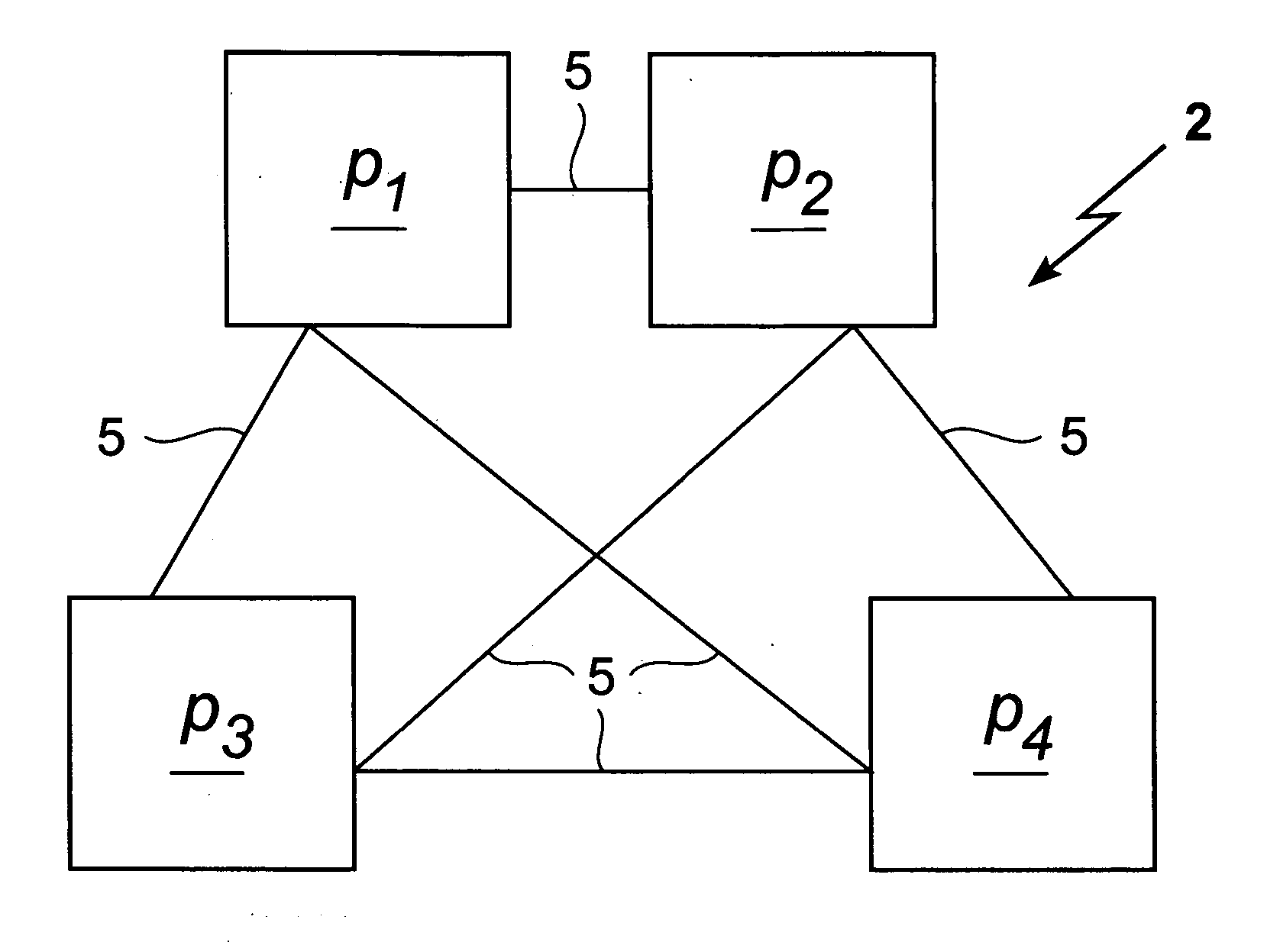Fine-grained forward-secure signature scheme
- Summary
- Abstract
- Description
- Claims
- Application Information
AI Technical Summary
Benefits of technology
Problems solved by technology
Method used
Image
Examples
Embodiment Construction
[0055] With general reference to the figures, the features of a fine-grained forward-secure signature schemes within a network are described in more detail below.
[0056] Turning to FIG. 1 which shows an example of a common computer system 2. It comprises here a first, second, third, and fourth computer node p1, p2, p3, p4 which are connected via communication lines 5 to a network. Each computer node p1, p2, p3, p4, may be any type of computer device or network device known in the art from a computer on a chip or a wearable computer to a large computer system. The communication lines can be any communication means commonly known to transmit data or messages from one computer node to another. For instance, the communication lines may be either single, bi-directional communication lines 5 between each pair of computer nodes p1, p2, p3, p4 or one unidirectional line in each direction between each pair of computer nodes p1, p2, p3, p4. The common computer system 2 is shown to facilitate ...
PUM
 Login to View More
Login to View More Abstract
Description
Claims
Application Information
 Login to View More
Login to View More - R&D
- Intellectual Property
- Life Sciences
- Materials
- Tech Scout
- Unparalleled Data Quality
- Higher Quality Content
- 60% Fewer Hallucinations
Browse by: Latest US Patents, China's latest patents, Technical Efficacy Thesaurus, Application Domain, Technology Topic, Popular Technical Reports.
© 2025 PatSnap. All rights reserved.Legal|Privacy policy|Modern Slavery Act Transparency Statement|Sitemap|About US| Contact US: help@patsnap.com



